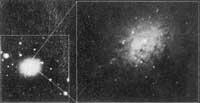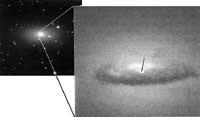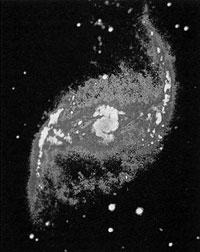Space Lighthouse
2000/09/01 Elhuyar Zientzia Iturria: Elhuyar aldizkaria
The Hubble Space Telescope has adopted a spectacular image of a 50-light-year galaxy called M87 or NGC 4486. The galaxy emits a curious ray of blue light that flashes like a lighthouse, and it seems that the origin of light would be in the imposing black hole in the center of the galaxy.
But, even though Hubble is the best image ever made, the ray of light is an old known to astronomers. H.D. 1918 Curtis observed it for the first time, but then he failed to give explanations. Decades later, radio telescopes detected strong radio waves from the same origin. However, the phenomenon was not fully understood. Hubble's photo has now helped astronomers advance this path. In the heart of the galaxy M87 there is a huge black hole whose mass is two billion times greater than that of the Sun.
On the other hand, the hole is surrounded by stars, cosmic powders and clouds of gas that are in danger of extinction (more than normal). The black hole causes all this to move and transform into plasma; finally a giant whirlpool of hot matter is formed that emits an intense magnetic field. Both light and radio waves come from the aforementioned whirlwind; the blue ray (and radio waves) are the electrons that revolve around the magnetic field lines: the phenomenon is called synchrotron radiation.
But even though the ray emitted by M87 is the closest and researched of us, further away there are more galaxies of the same characteristics.

Gai honi buruzko eduki gehiago
Elhuyarrek garatutako teknologia





